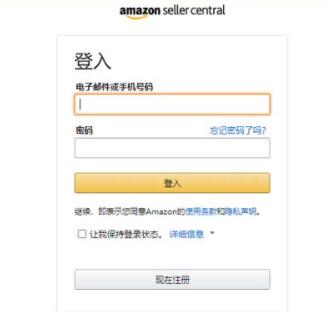快讯!RoHS新规


导语
2020年12月27日,《2020年商标现代化法案》(Trademark Modernization Act of 2020,以下简称《法案》)审核通过,并且将于2021年12月27日正式实施。《法案》对于现行美国商标法《兰哈姆法案》(Lanham Act)进行了重大修订,是自1988年《商标法修订法案》(Trademark Law Revision Act of 1988)以来最具影响力的修改。


Authorization for Office to
Shorten Response Times
授权商标局缩短答复时间
Section 1 of the Lanham Act requires a trademark applicant to respond to an office action issued during examination within six months. The TMA has amended that section of the Act to grant the USPTO greater flexibility in setting office action response deadlines. Specifically, the amended section authorizes the USPTO to shorten response periods, by regulation, for a time period between 60 days and six months, so long as applicants can receive extensions of time to respond, up to the traditional full six-month period. Applicants availing themselves of extensions will be required to support requests for them with filing fee to be determined through administrative rulemaking.
《兰哈姆法案》第1条要求商标申请人在六个月内答复审查意见。《法案》修改了该部分,授权美国专利商标局通过法规缩短答复时间,期限在60天至6个月之间。申请人可申请延长答复时间,最长可至6个月。延期申请费通过行政规章确定。


Codification of Letter of Protest Mechanism
The TMA also codifies the existing letter of protest procedure, which permits the submission of evidence by other parties during the trademark examination process that bears on the registrability of an applied-for mark. The existing procedure is informal, without a timeline for when the evidence must reach an examiner and does not require a filing fee. Under the TMA, will have two months in which to review the evidence submitted with a letter of protest. In addition, the Office must establish by regulation appropriate procedures for the consideration of evidence submitted with a letter of protest, and may choose to institute a filing fee.
《法案》对现有的抗议函程序进行了汇编,该程序允许第三方在商标审查过程中提交有关申请商标不可注册的证据,美国专利商标局局长将有两个月的时间审查提交的抗议函及所附证据。此外,美国专利商标局必须通过规章制定适当的审查程序,并可以选择收取申请费。


Ex Parte Challenges to Registrations
对注册的单方面质疑
The TMA authorizing two new mechanisms targeting deadwood on the USPTO’s trademark registers, both of which will become effective on December 27, 2021.
《法案》授权了两种针对美国专利商标局商标注册簿上的未使用注册商标的新机制。
The first, ex parte reexamination, will permit challenges to use-based registrations issued under Section 1(a) of the Lanham Act, or, in other words, registrations whose owners averred under oath during the application process that their marks were used in commerce. Such an averment may have been included in the application itself or, alternatively, as part of a statement of use. This mechanism will allow the USPTO to reexamine the accuracy of the registrant’s averment of use as of the filing date of that averment. It will not be available once a targeted registration has passed its fifth anniversary.
第一种,单方面复审,允许对根据《兰哈姆法案》第1(a)条发布的基于已使用(即商标权利人在申请过程中声明其商标用于商业活动)的注册商标提出质疑。此类声明可能已经包含在申请书本身中,或者作为使用声明的一部分。这一机制将允许美国专利商标局重新审查权利人提交的使用声明的准确性。但这一机制无法适用于注册已满五年的商标。
The second, ex parte expungement, will allow challenges to marks that have never been used in commerce. It will primarily target registrations issued under either Section 44(e) or Section 66(a) of the Act. It generally will be available to challengers only between the third and the tenth anniversaries of a registration’s issuance, although for a limited period of three years after the TMA’s effective date, petitions to initiate expungements may be brought against registrations at any time after their third anniversaries.
第二种,单方面删除注册记录,允许对从未在商业中使用过的商标提出质疑。这种主要针对根据法案第44(e)条基于国外注册的或第66(a)条马德里指定美国的注册。一般来说,第三人只能在注册发布的第三至第十年之间提出质疑。
Standing will not be required to initiate either of the two proceedings. Instead, any other party could initiate them by submitting to the Director of the USPTO evidence or testimony establishing a “prima facie case” of nonuse of a mark in commerce as of the “relevant date,” which the TMA defines as:
上述两种程序的提起均不需要特定主体资格。相反,任何第三方都可以向美国专利商标局局长提交证据或证言,证明在“相应日期”未在商业中使用该商标的“初步证据”,《法案》将该日期定义为:
· the date on which an averment of use is filed in support of an application with a Section 1(a) basis; and
· 为支持基于1(a)提出申请的使用声明提交日期,以及
· the third anniversary of a registration issued under either Section 44(e) or Section 66(a).
· 根据第44(e)条或第66(a)条注册商标的第三年。
Alternatively, the Director of the USPTO may determine on his or her own initiative that a prima facie case of nonuse exists.
此外,美国专利商标局局长可以依职权决定是否存在不使用的初步证据。
Regardless of how a prima facie case of nonuse as of the relevant date is established, the Director shall initiate the appropriate proceeding and require the registrant to come forward with documentary evidence to the contrary. (The owners of Sections 44(e) and 66(a) registrations have the option of demonstrating excusable nonuse.) On the one hand, if the Director deems the registrant’s responsive showing inadequate, the goods or services in connection with which use in commerce did not exist as of the relevant date will be stricken from the registration, subject to the applicant’s right to appeal to the Trademark Trial and Appeal Board. On the other hand, however, if the Director finds the responsive showing adequate, that determination will have preclusive effect barring all further ex parte challenges to the registration.
无论在相应日期有什么证明未使用的初步证据,美国专利商标局局长均应制定适当的程序,并要求注册人提供相反的书面证据。(第44(e)条及66(a)条注册人可说明商标未使用的正当理由。)一方面,如局长认为注册人的答复不够充分,截至相应日期尚未在商业中使用相关商品或服务,则将删除该注册记录,但注册人有权向商标审判和上诉委员会提出上诉。另一方面,如局长认为答复证据充分,则其决定具有排他性效力,可禁止对该件注册提出任何进一步的单方面质疑。


Restoration/Confirmation of the Presumption of Irreparable Harm 不可弥补的损害推定的恢复/确认
A prerequisite for the entry of injunctive relief in trademark and unfair competition litigation is a demonstration that the plaintiff will suffer irreparable harm without that relief. Significantly, Section 6 of the TMA creates a uniform rule to be applied nationally with respect to what a plaintiff must show in Lanham Act case to establish its entitlement to an injunction. Before the Supreme Court’s decisions in eBay Inc. v. MercExchange LLC, and Winter v. Natural Resources Defense Council, Inc., courts almost uniformly recognized a presumption that a prevailing plaintiff under the Lanham Act would be irreparably harmed by continuing violations of the Act.
在商标与不正当竞争诉讼中加入禁令救济的前提是证明若原告没有禁令救济将遭受不可弥补的损害。值得注意的是,《法案》第6条创建了一项全国适用的统一规则,规定原告必须在《兰哈姆法案》案件中提供的证明,以确定其有获得禁令的权利。在最高法院对eBay Inc.诉MercExchange LLC和Winter诉自然资源保护委员会(Natural Resources Defense Council, Inc.)作出判决之前,下级法院几乎一致推定,持续违反《兰哈姆法案》将对原告造成不可弥补的损害。
This changed in 2006 when eBay and Winter eliminated similar presumptions in litigation brought under patent and environmental law. Thereafter, courts struggled to determine whether the presumption still applied in litigation under the Lanham Act. The Third, Ninth, and Eleventh Circuits have held it does not. The First and Second Circuits have questioned the on-going viability of the presumption without expressly resulting on the issue. To add to the confusion, at least the Fifth and the Eighth Circuits, as well as numerous district courts, have recognized irreparable harm in trademark cases after eBay without clearly addressing eBay or the presumption. Practically speaking, the circuit split has meant that a trademark owner’s chances of success in obtaining injunctive relief has varied significantly depending on whether the circuit maintained or dispensed with the presumption of irreparable harm, and accordingly has encouraged forum shopping.
这种情况在2006年发生了变化,eBay和Winter在根据专利法和环境法提起的诉讼中取消了类似的推定。此后,不同法院对根据《兰哈姆法案》的推定是否仍适用于诉讼的决定大相径庭。第三、第九和第十一巡回上诉法院已裁定不成立。第一和第二巡回上诉法院对推定的持续可行性提出了质疑,但并未得出明确结论。更让人困惑的是,至少第五和第八巡回法院,以及许多地方法院,仍在eBay判决之后的商标案件中认可推定存在不可弥补的损害。从实际意义上讲,巡回法院之间的意见分歧意味着商标所有人成功获得禁令救济的概率有很大的不同,这取决于巡回法院是否维持或废止了不可弥补的损害推定,因此鼓励了当事人挑选法院的行为。
The TMA has now resolved the inconsistencies by codifying in the Lanham Act that a trademark owner seeking an injunction in an infringement case is entitled to a rebuttable presumption of irreparable harm upon establishing infringement at the proof stage, or showing a likelihood of liability in the context of motions for temporary restraining orders or for preliminary injunctions. This abrogates court decisions that have applied eBay to trademark cases and eliminated the presumption of irreparable harm.
《法案》对《兰哈姆法案》的法条进行汇编,明确在侵权案件的证据出示阶段,申请禁令的商标所有人有权推定有不可弥补的损害发生,或者证明在此背景下有赔偿责任产生的可能性,从而解决了地方法院观点不一致之处。这推翻了法院对eBay商标案件的判决,并废除了对不可弥补的损害的推定。


Conclusion
结论
As perhaps befits its enactment as part of a much larger omnibus bill, the TMA addresses a variety of otherwise unrelated trademark issues. Taken as a whole, however, it adopts a number of reforms that better protect trademark owners, and, by extension, consumers. The new post-registration reexamination and expungement procedures provide faster and more cost-effective means to challenge trademark claims grounded in merely false (and not necessarily fraudulent) averments of use than the existing opposition and cancellation mechanisms. In addition, the TMA provides courts and litigants with much-needed clarity concerning the showing of irreparable harm necessary to support a request for injunctive relief in litigation under the Lanham Act, thereby removing a significant incentive for forum-shopping under current law. Although certain issues remain to be clarified under the TMA, e.g., the nature of the responsive showing required of a registrant targeted by either of the two new ex parte procedures, its enactment marks significant changes in trademark prosecution and litigation practice alike.
作为一个更大的综合法案的一部分,《法案》解决了各种看似不相关的商标问题。但总的来说,它采取了一些改革措施,以更好地保护商标权人,进而保护消费者。新的注册后复审和删除程序提供了比现有的异议和撤销机制更快和更具成本效益的方式,来质疑仅仅基于虚假(不一定是欺诈性)使用的商标使用声明。此外,《法案》还为法院和诉讼当事人提供了非常必要的明确说明,以证明根据《兰哈姆法案》在诉讼中支持禁令救济请求所必需的不可弥补的损害,从而消除了现行法律下当事人挑选法院的重要动机。尽管《商标法》仍有某些问题有待明确,例如,两个新的单方面程序中的任何一个程序都要求注册人出示的回应性证明的性质,但该法的颁布标志着商标行政程序和诉讼实践都发生了重大变化。

原文来源:
1.https://www.uspto.gov/trademarks/laws/2020-modernization-act
2.https://www.kilpatricktownsend.com/Insights/Alert/2020/12/Trademark-Modernization-Act-Becomes-Law (作者:Theodore H. Davis Jr.和 Rita Weeks )

来源:IPRINTL
作者:WPIP-Curtain
编辑:IPRINTL-Elaine
校对:IPRINTL-Angelia

我们建了一个亚马逊卖家交流群,里面不乏很多大卖家。
现在扫码回复“ 加群 ”,拉你进群。
热门文章
*30分钟更新一次































